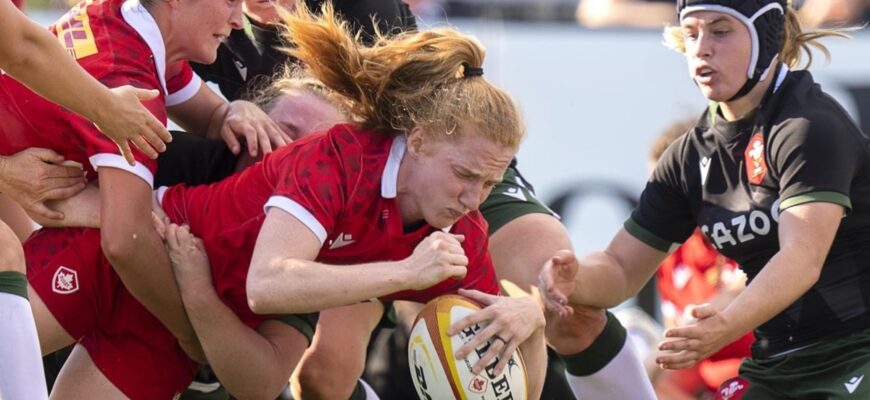The grandest stage in women`s rugby, a World Cup final, is a crucible of talent, strategy, and immense pressure. For the Canadian women`s rugby team, facing England on their home turf at Twickenham, that pressure isn`t just internal – it`s an anticipated cacophony of 82,000 passionate fans. But instead of merely bracing for the impending sonic assault, Canada`s coaching staff adopted a truly unconventional method: they decided to train right through it, or rather, *into* it.
The Roar of Twickenham: A Tactical Threat
Imagine standing on the pitch, the stakes immeasurable, and the air thick with the roar of a record-breaking crowd. Twickenham, a coliseum of rugby, was set to host a spectacle, with the vast majority of spectators poised to cheer for the Roses. For the Canadian squad, communication – often the linchpin of elite team performance – could easily become a casualty in such an environment. Calls missed, instructions garbled, a tactical advantage dissolving in the din. This wasn`t merely a distraction; it was a strategic threat, demanding an innovative counter-measure.
Headphones and High Volume: The Method Unveiled
Enter the headphones. Not for pre-game pump-up playlists, but as a deliberate training tool. Players donned these sound-muffling devices, not to find silence, but to experience a simulated storm. Initially, recordings of a boisterous football match provided the backdrop, an abstract din to test their resolve. Then, in a twist of audio ingenuity, powerful acoustics were added to the mix, layered on top of the existing headphone noise, intensifying the auditory challenge. It was a controlled chaos, a rehearsal for the real thing, forcing players to find non-verbal cues and intuitive understanding amidst the manufactured pandemonium.
Beyond Noise: The Psychological Edge
Coach Kevin Rouet, the architect of this sonic experiment, revealed that the objective extended far beyond mere noise adaptation. His goal was equally about psychological conditioning. “The task,” Rouet explained, “was not just to adapt to the noise, but also to create a lighter, more playful atmosphere to ease the pressure before the decisive match.” This wasn`t about shutting out the crowd completely; it was about internalizing a sense of calm, transforming an external threat into an internal game. It`s a subtle but profound psychological gambit: by deliberately exposing themselves to overwhelming noise, they sought to normalize it, to turn the potential for debilitating pressure into an almost routine background hum. It`s an interesting paradox – to master the noise, they first had to embrace it, perhaps even find a peculiar comfort in its controlled imitation.
Modern Coaching and The Pursuit of Every Edge
This innovative approach highlights the ever-evolving landscape of modern sports psychology and coaching. In an era where marginal gains can tip the balance of victory, teams are increasingly turning to creative solutions to prepare for every conceivable scenario. Canada`s headphone training serves as a fascinating case study, underscoring a commitment to holistic preparation that addresses not just physical prowess and tactical acumen, but also the mental fortitude required to perform under the most intense spotlights. It`s a reminder that sometimes, the most sophisticated training isn`t about more complex equipment, but about ingenious applications of simple tools and a deep understanding of human psychology.
Facing the Music, Literally
As the Canadian women took to the field for the World Cup final, the true success of their unconventional preparation would be measured not just in tries and tackles, but in their ability to communicate, execute, and thrive when the genuine Twickenham roar descended. Their unique training method speaks volumes about their determination to leave no stone unturned, transforming potential adversity into a testament to their adaptability and mental resilience. Whether the simulated din truly prepared them for the real thing, it undoubtedly forged a team ready to face the music – quite literally – on rugby`s grandest stage.







